- Books Name
- Class-8 Science Book
- Publication
- PathSet Publications
- Course
- CBSE Class 8
- Subject
- Science
EARTHQUAKES
- It is a sudden shaking or trembling of the earth, which lasts for a very short period, is called an earthquake.
- It is caused by a disturbance deep inside the earth’s crust.
- It can cause large-scale destruction and damage to human life.
WHAT CAUSES AN EARTHQUAKE?
- The tremors are caused by the disturbance deep down inside the uppermost layer of the earth called the crust.
- The earth’s crust is made up of several pieces of landmass. These are called tectonic plates. When they brush past one another or a plate goes under another due to collision. They cause vibrations in the earth’s crust. These occur as an earthquake on the surface of the earth.
- Tremors on the earth can also be caused when a volcano erupts, a meteor hits the earth or an underground nuclear explosion is carried out. However, most earthquakes are caused by the movement of the earth’s plates.
Earthquakes
- Some natural phenomena such as thunderstorms and cyclones can be predicted by meteorologists. However, certain natural phenomena are uncertain and cannot be predicted accurately. One of them is an earthquake.
- Earthquake is a natural phenomenon that occurs as shaking or trembling of the Earth's surface.
- It occurs or lasts for a very short period.
- The main cause of earthquakes is disturbances inside the crust of the earth.
- Deep inside the earth, earthquakes occur all the time however they are not noticeable on the earth’s surface. Sometimes major earthquakes occur on the earth's surface which can be destructive.
Earthquakes can lead to:
- Loss of life
- Loss of property such as buildings, dams and bridges
- Floods
- Landslides
- Tsunamis
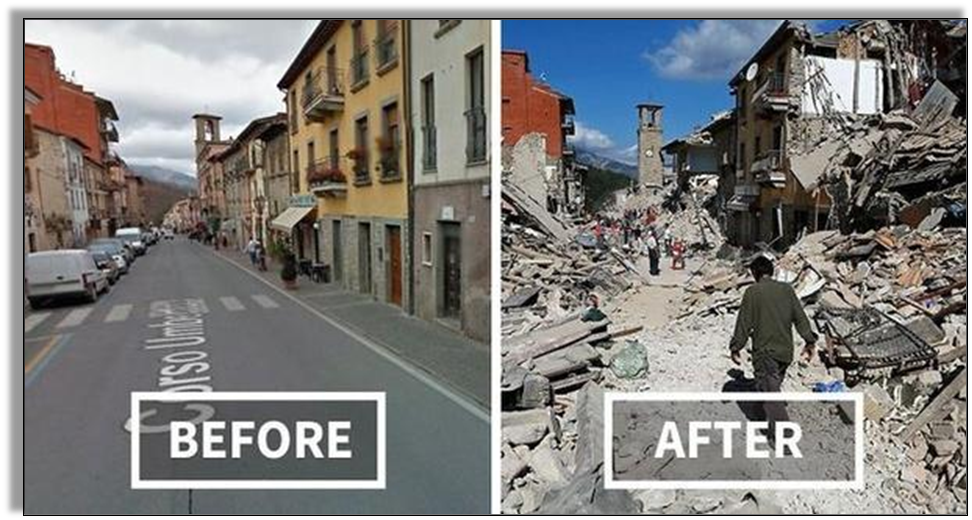
Cause of an earthquake
- Earth’s surface is divided into several layers the crust, mantle, inner core and outer core.
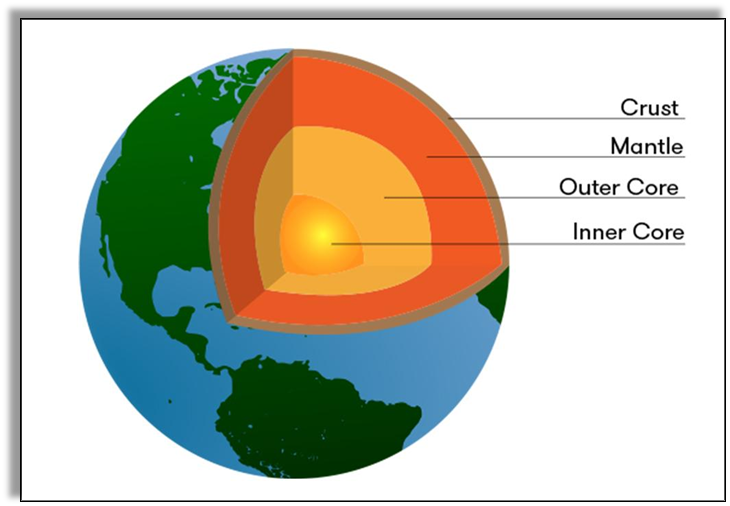
- The outermost layer of the Earth is divided into several plates. These plates are always moving.
- As they move past each other or collide, disturbances are caused in the earth's crust. These disturbances are called earthquakes or tremors.
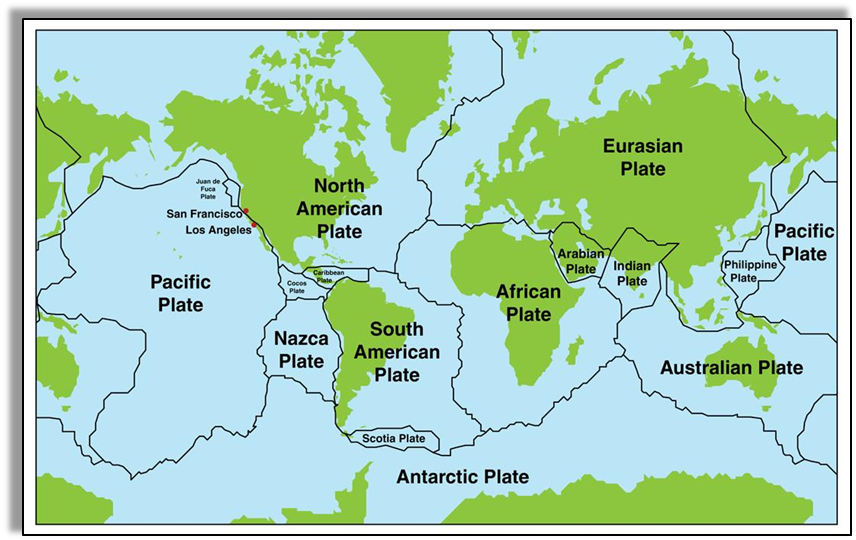
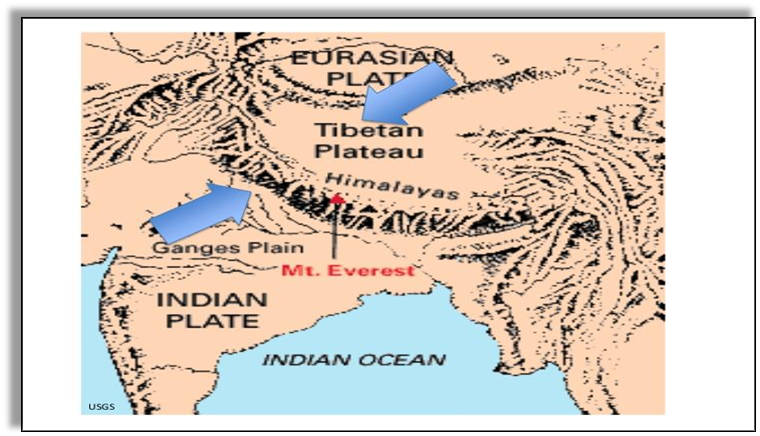
Other causes of an earthquake can be:
- Volcanic eruptions
- When a meteor hits the Earth's surface
- The nuclear explosion under the Earth's surface
- Although the causes of an earthquake are clear the scientists cannot predict when the earthquake would occur.
What are seismic zones?
- The movement of plates causes an earthquake. Hence the earthquakes are most likely to occur on their boundaries. The areas that lie on the boundaries of these plates are called weak zones, seismic zones, or fault zones.
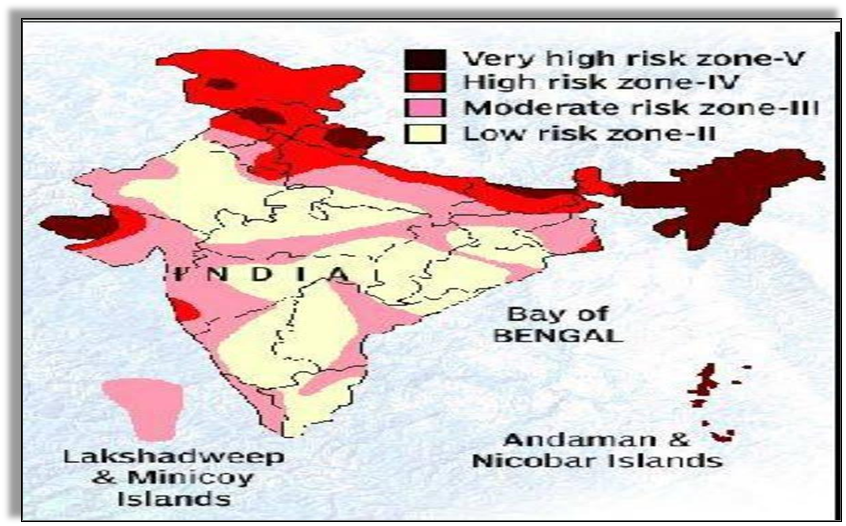
What is the Richter scale?
- A scale that is used to determine the magnitude or strength of an earthquake is called the Richter scale.
- Destructive earthquakes have a Richter scale magnitude of more than 7.
- A Richter scale is not a linear scale, that is, a magnitude of Richter scale 6 does not imply that it is one and a half times more destructive than an earthquake with a magnitude of 4.
- It rather means that an earthquake of a magnitude of 6 is 100 times more powerful than an earthquake with a magnitude of 4.
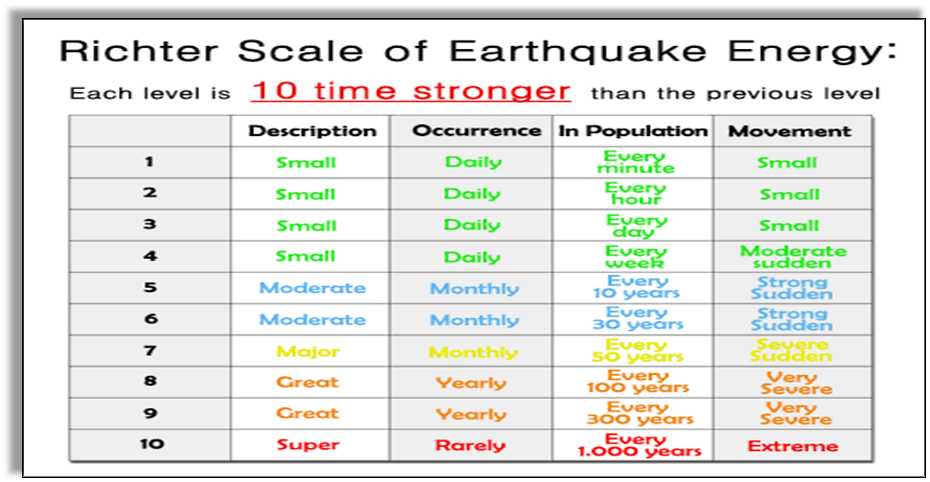
What are seismic waves?
- The earthquakes produce waves on the earth's surface which are called seismic waves. These waves travel in all directions on the Earth's surface.
What is the Focus of an earthquake?
- The focus of an earthquake is a point inside the earth’s surface where the earthquake originates. It is also called the hypocenter.
What is an Epicentre?
- The epicenter is a region on the earth’s surface that lies just above the focus of the earthquake is called the epicenter. The earthquake does not originate from the epicenter.
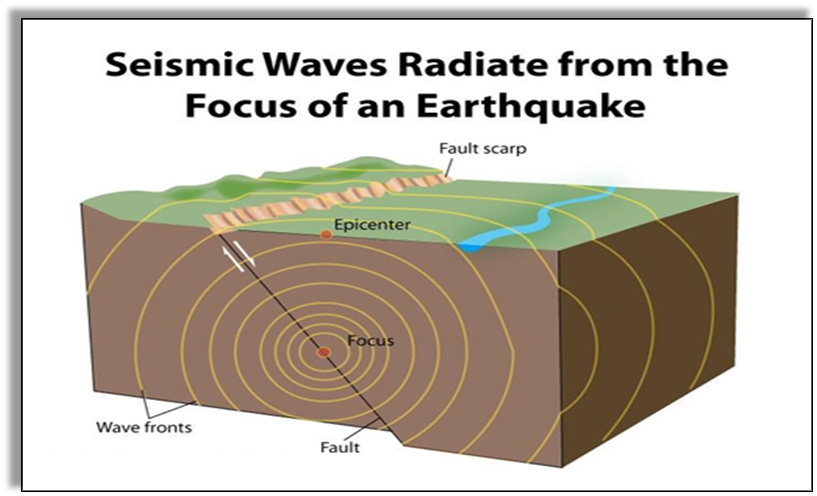
What is a seismograph?
- A seismograph is an instrument that can record seismic waves.
- It contains a metal rod or a pendulum that can vibrate as the earthquake occurs.
- The metal rod is attached to a pen that records the waves on the paper.
- Scientists study these waves and then construct a map of the earthquake.
- This also helps them in determining the power of the earthquake.
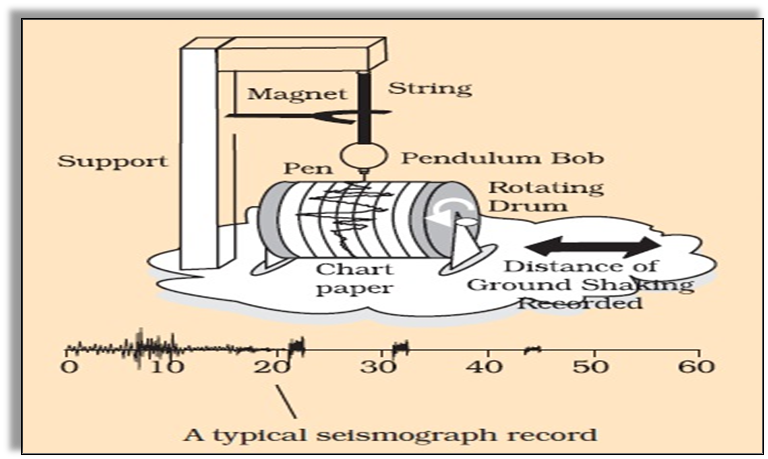
Protection against an Earthquake
- The buildings located in the seismic zones should be constructed in a way that they can handle major tremors. The following measures should be taken by people to make the houses of buildings quake-safe:
- People should always consult architects and engineers before constructing a new building.
- The roofs of the building should be kept light.
- Timber or mud should be used in the construction of buildings rather than heavy materials.
- The shelf and cupboard should be fixed to the walls so that they do not fall off easily.
- Things such as photo frames, geysers, clocks and other wall hangings should be placed in a place that does not harm anybody if they fall off.
- Buildings should have firefighting equipment as earthquakes may cause fires.
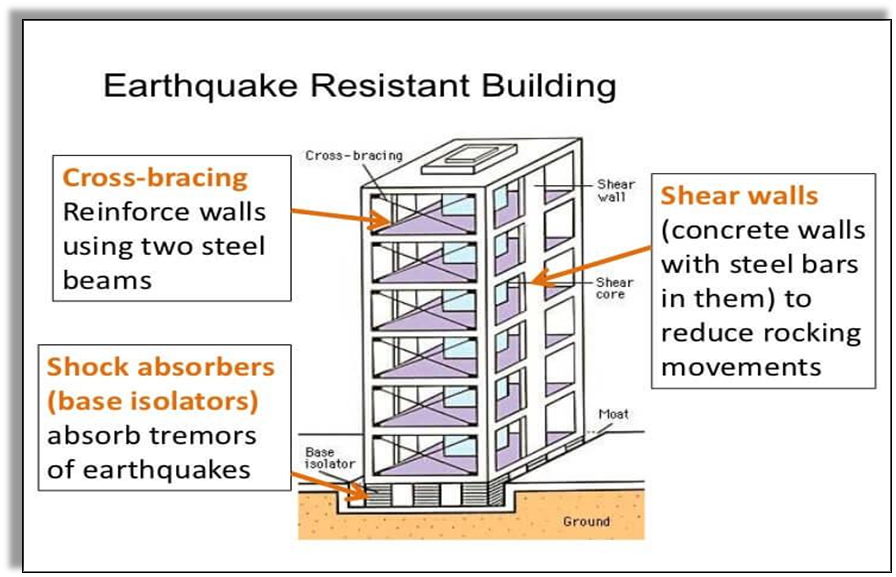
How buildings can be made Quake-Safe?
- How can people protect themselves from an earthquake?
- Indoors safety measures
- One should hide under a table until the earthquake stops.
- One should not stay close to heavy and tall objects.
- If one is in bed they should cover their head with a pillow instead of getting up.
- Outdoor safety measures
- One should find a place which has no tall buildings around or even trees.
- If a person is inside a car or a bus they should drive slowly to a clear place and be inside until the earthquake stops.
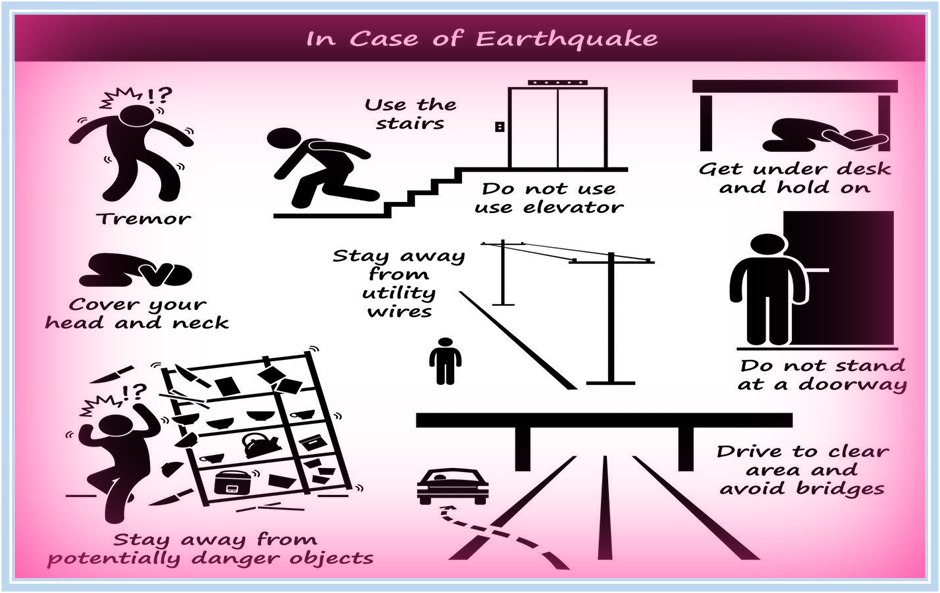
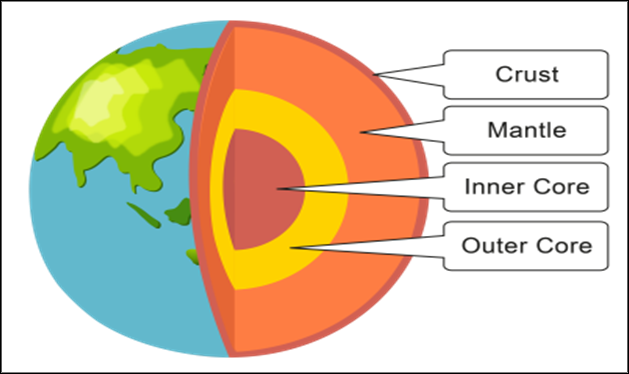
SEISMIC ZONE
- As earthquakes are caused by the movement of the earth’s plates, the boundaries of the plates are the weak zones where earthquakes are more likely to occur. These weak zones are called Seismic Zone.
RICHTER SCALE
- The power of an earthquake is expressed in terms of a magnitude on a scale called the Richter Scale.
- Very destructive earthquakes have magnitudes higher than 7 on the Richter scale.
- The Richter Scale was developed in 1935 by Charles Richter and Beno Gutenberg of the California Institute of Technology
- Richter scale is not linear. This means an increase of 2 in magnitude means 1000 times more destructive energy.
- For example, an earthquake of magnitude 6 has thousand times more destructive energy than an earthquake of magnitude 4.
PROTECTION AGAINST EARTHQUAKE
Interactive
- Earthquakes cannot be predicted & they cause destruction. Therefore, it is important to take necessary precautions to protect ourselves in time.
- Buildings in the seismic zones should be designed ‘quake-safe’.
- Consult qualified architects & structural engineers.
- In highly seismic areas, the use of mud or timber is better than using heavy construction material.
- The roof should be as light as possible so that if the structure falls, the damage will not be heavy.
- Cupboards & shelves should be fixed on the walls so that they do not fall easily.
- Since some buildings may catch fire due to an earthquake, it is necessary that all buildings have fire fighting equipment in working order.
PROTECTION DURING AN EARTHQUAKE
- The buildings should be designed so that they can withstand major tremors.
- The use of mud or timber is better than the heavy construction materials for making the buildings in earthquake-prone areas.
- Cupboards and shelves should be fixed to the walls so that they do not fall on someone during an earthquake.
When Earthquake strikes, the following steps should be taken to protect self:
INDOORS
- Take shelter under a table & stay there till the shaking stops.
- Stay away from tall & heavy objects.
- If you are in bed, do not get up. Protect your head with a pillow.
OUTDOORS
- Find a clear spot, away from buildings, trees & overhead power lines. Drop to the ground.
- If you are in a car or a bus, do not come out. Ask the driver to drive slowly to a clear spot. Do not come out till the tremors stop.

 PathSet Publications
PathSet Publications
